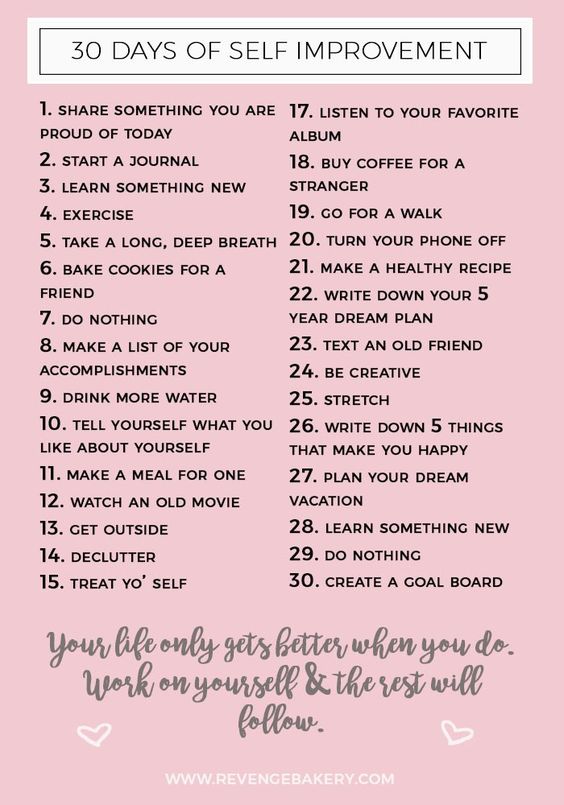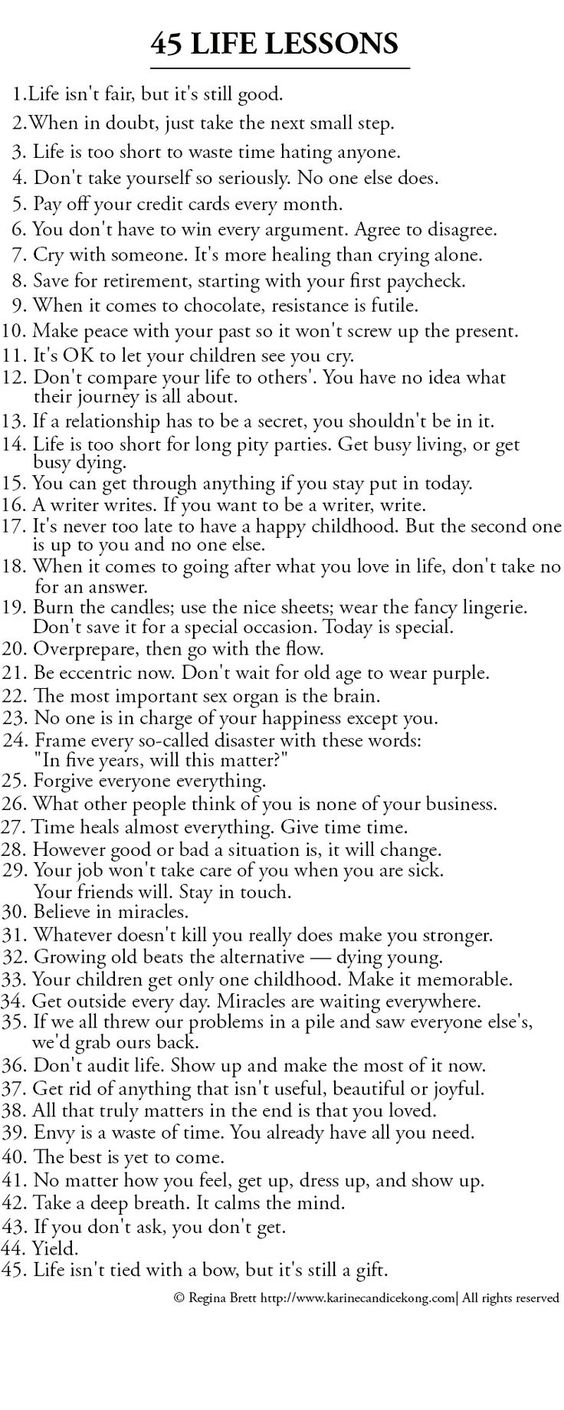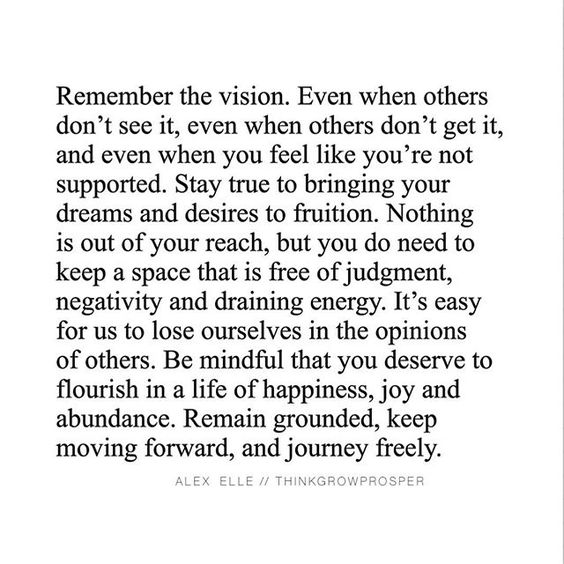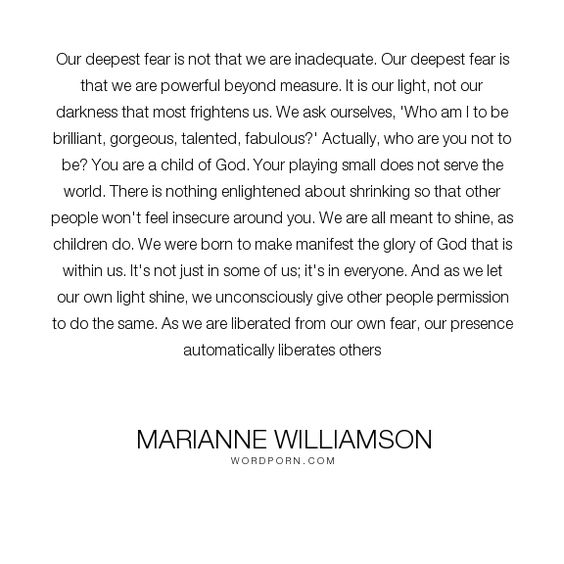
Process of Pivoting.
Image
Reply




It’s a new month! How’s your New Year’s resolution coming along so far? Sometimes they can be so daunting that they fall to the wayside over time. Here are 30 simple ways to improve yourself every day. And I mean it, real simple. Print this page or screen save it to your smartphone and do one self improvement each day. By the end of this month, you’re going to have a whole new you! 🙂 Easy Peasy!
©2017 Susie Lee

I want to share this TED Talks article with you today. It’s a fantastic piece on the stories we tell ourselves – the interpretation of the experiences we’ve had, and the emotional attachments we place on these stories. Our interpretations can either propel us forward or keep us back. What story do you keep playing in your mind? And if it’s not serving you, are you willing to let that go this year?
©2017 Susie Lee

We are all storytellers — all engaged, as the anthropologist Mary Catherine Bateson puts it, in an “act of creation” of the “composition of our lives.” Yet unlike most stories we’ve heard, our lives don’t follow a predefined arc. Our identities and experiences are constantly shifting, and storytelling is how we make sense of it. By taking the disparate pieces of our lives and placing them together into a narrative, we create a unified whole that allows us to understand our lives as coherent — and coherence, psychologists say, is a key source of meaning.
Northwestern University psychologist Dan McAdams is an expert on a concept he calls “narrative identity.” McAdams describes narrative identity as an internalized story you create about yourself — your own personal myth. Like myths, our narrative identity contains heroes and villains that help us or hold us back, major events that determine the plot, challenges overcome and suffering we have endured. When we want people to understand us, we share our story or parts of it with them; when we want to know who another person is, we ask them to share part of their story.
An individual’s life story is not an exhaustive history of everything that has happened. Rather, we make what McAdams calls “narrative choices.” Our stories tend to focus on the most extraordinary events, good and bad, because those are the experiences we need to make sense of and that shape us. But our interpretations may differ. For one person, for example, a childhood experience like learning how to swim by being thrown into the water by a parent might explain his sense of himself today as a hardy entrepreneur who learns by taking risks. For another, that experience might explain why he hates boats and does not trust authority figures. A third might leave the experience out of his story altogether, deeming it unimportant.
People who believe their lives are meaningful tend to tell stories defined by growth, communion and agency.
McAdams has been studying narrative identity for over 30 years. In his interviews, he asks research subjects to divide their lives into chapters and to recount key scenes, such as a high point, a low point, a turning point or an early memory. He encourages participants to think about their personal beliefs and values. Finally, he asks them to reflect on their story’s central theme. He has discovered interesting patterns in how people living meaningful lives understand and interpret their experiences. People who are driven to contribute to society and to future generations, he found, are more likely to tell redemptive stories about their lives, or stories that transition from bad to good. There was the man who grew up in dire poverty but told McAdams that his hard circumstances brought him and his family closer together. There was the woman who told him that caring for a close friend as the friend was dying was a harrowing experience, but one that ultimately renewed her commitment to being a nurse, a career she’d abandoned. These people rate their lives as more meaningful than those who tell stories that have either no or fewer redemptive sequences.
The opposite of a redemptive story is what McAdams calls a “contamination story,” in which people interpret their lives as going from good to bad. One woman told him the story of the birth of her child, a high point, but she ended the story with the death of the baby’s father, who was murdered three years later. The joy over the birth of her child was tainted by that tragedy. People who tell contamination stories, McAdams has found, are less “generative,” or less driven to contribute to society and younger generations. They also tend to be more anxious and depressed, and to feel that their lives are less coherent compared to those who tell redemptive stories.
Redemption and contamination stories are just two kinds of tales we spin. McAdams has found that beyond stories of redemption, people who believe their lives are meaningful tend to tell stories defined by growth, communion and agency. These stories allow individuals to craft a positive identity: they are in control of their lives, they are loved, they are progressing through life and whatever obstacles they have encountered have been redeemed by good outcomes.
Even making smaller story edits to our personal narratives can have a big impact on our lives.
One of the great contributions of psychology and psychotherapy research is the idea that we can edit, revise and interpret the stories we tell about our lives even as we are constrained by the facts. A psychotherapist’s job is to work with patients to rewrite their stories in a more positive way. Through editing and reinterpreting his story with his therapist, the patient may come to realize that he is in control of his life and that some meaning can be gleaned from his hardships. A review of the scientific literature finds that this form of therapy is as effective as antidepressants or cognitive behavioral therapy.
Even making smaller story edits can have a big impact on our lives. So found Adam Grant and Jane Dutton in a study published in 2012. The researchers asked university call-center fundraisers to keep a journal for four consecutive days. In one condition, the beneficiary condition, the researchers asked the fundraisers to write about the last time a colleague did something for them that inspired gratitude. In the second condition, the benefactor condition, the participants wrote about a time they contributed to others at work.
The researchers wanted to know which type of story would lead the research subjects to be more generous. To find out, they monitored the fundraisers’ call records. Since the fundraisers were paid a fixed hourly rate to call alumni and solicit donations, the researchers reasoned, then the number of calls they made during their shift was a good indicator of prosocial, helping behavior.
After Grant and Dutton analyzed the stories, they found that fundraisers who told a story of themselves as benefactors ultimately made 30 percent more calls to alumni after the experiment than they had before. Those who told stories about being the beneficiary of generosity showed no changes in their behavior.
Grant and Dutton’s study suggests that the ability of a story to create meaning does not end with the crafting of the tale. The stories the benefactors told about themselves ultimately led to meaningful behaviors — giving their time in the service of a larger cause. Even though the fundraisers knew they were only telling their stories as part of a study, they ultimately “lived by” those stories, as McAdams would put it. By subtly reframing their narrative, they adopted a positive identity that led them to live more purposefully.
Excerpted from the new book The Power of Meaning: Crafting a Life That Mattersby Emily Esfahani Smith. Published in the United States by Crown, an imprint of the Crown Publishing Group, a division of Penguin Random House LLC, New York. Copyright © 2017 By Emily Esfahani Smith. Reprinted with permission.
It’s the new year! And with it, brings resolutions – usually revolving around health, happiness, work, or all of the above. Sometimes, our goals are so lofty they’re unattainable and they can become more of a burden than give us freedom. Here are 13 simple foolproof ways to improve your life every single day. Happy New Year!
©Susie Lee 2017

Absolutely love these 45 gems of wisdom! Take these into the new week!


This is one of my all time favorite quotes. Often, we tend to dim our light so it won’t make those around us feel uncomfortable or we’re fearful of what they may think of us. But today, I encourage you to let your light shine bright. This will take courage and vulnerability, and perhaps daily practice. But when we begin to align ourselves authentically, we’ll inadvertently encourage others to do the same. So let’s stop shrinking back and start shining bright!
©2016 Susie Lee

I came across this today and I absolutely love it. Sometimes, it’s hard to decipher how we’re feeling, let alone why. Our emotions aren’t without reason, they’re trying to tell us something – that we need to either let go, make a change, heal, face our fears, or do something.
Let’s use bitterness as an example, how many times have we blamed other people for how they’ve hurt us? Instead of taking the time to look within, we’re quick to punish, take revenge, give the silent treatment, or make them feel guilty. This may cause temporary relief but it’ll never bring true healing. Our bitterness never justifies rude behaviour towards those who have hurt us. And the sooner we acknowledge that we’re responsible for our feelings (despite what has been done to us), the sooner we’ll find healing.
Our emotions are usually good indicators as to what’s going on inside of us – so listen to it and make the necessary changes within. And if reconciliation is needed, then have the courage to reach out to the other person. By no means do I want to simplify the hurt that has been done to us but this ’emotions definition chart’ is a good starting point to identify how/why we’re feeling so we can begin to make positive choices towards living our best.
©2016 Susie Lee
